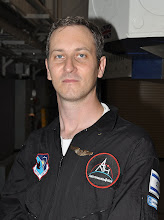Hello, Hubble. You don't know me, I suppose. I'm one of those people here on Earth that likes technology and space. I guess you can call me a geek. You are younger than me in human years, although in technology years you're much older and accomplished.
Hubble, you are possibly the most impressive piece of technology that looks outwards to space in peace. We, the human race, have built you and sent you to the sky at a time of hope - the Cold War just ended and the space shuttle started flying again after the Challenger accident, which grounded you too. Finally, after four years of waiting, ready to go, on Earth, waiting to fulfill your destiny as humanity's big eye in the sky, you got your chance and went up there to start looking.
 |
| The Cat's Eye Nebula |
In the beginning, you had some infancy problems. You needed
glasses to fix your vision and your
communication skills weren't that great. But as time passed, you got good care from friends that came to
visit you 5 times and brought you new tools and improvements. Those fixes and improvements helped you help us see the universe in amazing new ways.
Hubble, as amazing as you are and as successful your upgrades were, it's time to face the truth - you're over the hill. In a few years you won't be the coolest telescope on the block anymore, and you'll notice your friends stopped visiting. Just
last year you got a visit and new technology, I know, but less than a year from now, if all goes according to our current and previous president plans, we won't have a way to get to you, so please try not to malfunction.
You were one of the constants at the turn of a century that was filled with wars and uncertainty, a constant in a world of ever growing terminology - Internet, Facebook, Twitter, Dual Core, Quad Core, Smart-Phone, iPhone, Browser Wars... Speaking of which, in a discussion over Twitter (a virtual place on the Internet where one expresses anything in 140 characters or less... But you already know that, you're
there) with one of your current adoptive NASA parents,
Lori Garver, I expressed concern for your well-being now that we won't be able to visit anymore. She assured me you're in great health but also noted that your successor as king of the sky, the James Web Space Telescope (
JWST), will be ready in a few years.
 |
| Tweet from NASA Deputy Administrator, Lori B. Garver |
You're actually very hip with current trends and technologies. You're on
Twitter and
Facebook, talked about in
many web sites and even
your own site that shows a lot of the universe beauty you help us see. Your web site even lets people
write you a message, which gave me the idea for this letter. There's also a movie about you,
Hubble 3D, filmed by your friends and repair-people - the astronauts that helped you overcome some of your difficulties.
I'll always remember you fondly in conjunction with the space shuttle and how you opened up our eyes to new visions of the universe our own eyes aren't capable of. Good luck at the end of your life, hopefully as long as 10 or even 20 more years...













































 Space Shuttle Launch Poll Results
Space Shuttle Launch Poll Results












